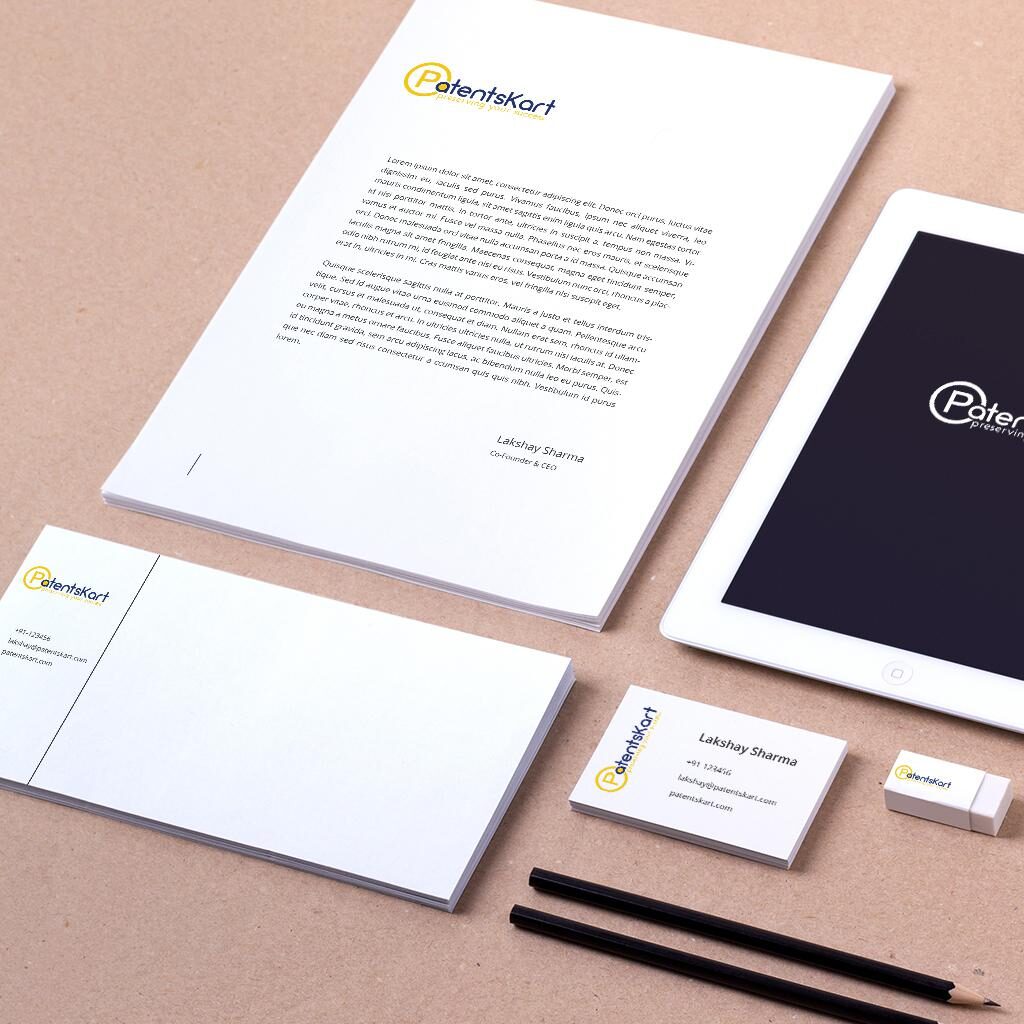Screen inventions at an early stage to reduce your prosecution costs
Screen inventions at an early stage to reduce your prosecution costs

Skilled Technical expertise

Quick turnaround time

Competitive billing rates

Customised Reports

Conducting a patentability search or novelty check before drafting or filing a patent application helps assess the likelihood of patent grant. Early prior art analysis and novelty assessment can save significant costs in patent filing, prosecution, and maintenance, while ensuring a stronger IP strategy and reducing the risk of future patent disputes.
At PatentsKart, we conduct extensive patentability searches to evaluate an invention against identified prior art references. This process helps determine whether your invention is novel, inventive, and patentable. Patents are among the most valuable intangible assets for organizations that rely on research and innovation, granting exclusive rights to use, commercialize, and protect technologies. Thorough patentability analysis ensures that patents are granted only for truly inventive ideas, safeguarding your IP strategy and patent portfolio.
A patentability search, also called a novelty search, is conducted prior to filing a patent application to confirm the uniqueness and novelty of an invention. By analyzing prior art, inventors, patent attorneys, or patent examiners can determine if a similar invention already exists. If prior art is identified, you can save time, costs, and effort by refining your invention or modifying your patent filing strategy to meet the criteria of patentability, ensuring a stronger and more defensible IP portfolio.
We are leveraging diverse industry experiences. We offer a results-driven, flexible and scalable approach that will allow you to reach your goals
Multi-lingual searches 2013 Chinese, Japanese, Taiwanese language 24-hour productivity capitalizing on time zone differences
Leverage our diverse industry experience
Conducting a patentability search (or novelty search) for a patent application can be complex, as it requires evaluating where your invention stands in relation to existing technologies. Through careful prior art research, searches are typically categorized into relevant and non-relevant results. Relevant searches identify inventions closely matching your idea, while non-relevant searches cover patents or publications with only partial similarity. This structured approach ensures accurate novelty assessment and informs your patent filing strategy.
We check the availability of your invention and estimate how much protection you can get
We help you think of an invention and make sure it's not like anything else on the market.
We analyze how different types of patents work, what steps should take place before filing for one particular patent or even if this is something that needs its very own company name with trademark protection.
We conduct a patent search before filing an application because it won't give your new invention the full scope of protection if there is prior art. We estimate the sunk costs you will have when patenting your invention and how much protection royalty-free status provides.


To save time and money on your patent, you should hire a professional search firm like ours. We conduct an accurate Patentability Search novelty search or prior art search to ensure that no prior art exists, which would later be used against us in court as grounds for rejection of our application.
By becoming more knowledgeable and familiar with the literature, you will then be able to use this knowledge as an advantage. Knowledge is power – it’s crucial not only for increasing your chances of having a patent granted but also making sure that any future litigation or intellectual property issues are avoided in advance by implementing strategies now!
The cost of filing a patent application is much more costly than conducting an extensive search for possible inventions. It’s always better to find out early on if your invention meets the requirements and can be patented, because by then you will have already wasted time in developing it further when there may not even exist demand or customers who would purchase what you’re selling!
The cost of filing a patent application is much more costly than conducting an extensive search for possible inventions. It’s always better to find out early on if your invention meets the requirements and can be patented, because by then you will have already wasted time in developing it further when there may not even exist demand or customers who would purchase what you’re selling!
To avoid violating someone is patent Conduct a Freedom-To-Operate search, either through Patent Search, Design Search, or with the help of patent attorneys.
Note the defense range of your patent. Is your patent guarded in the countries of your targeted markets? Or is it protected in countries where a possible violation will occur?
Pursue legal consultation. An experienced patent attorney or advisor will be essential in interpreting and forecasting likely patent infringement risks.
The ideal time to perform a patentability search is before drafting or filing a patent application. Conducting an early novelty search helps determine whether your invention is truly unique and patentable, informs strategic decisions on IP protection, and allows you to refine or improve your idea if similar prior art exists. Early prior art analysis also minimizes legal risks and reduces unnecessary patent filing costs, ensuring a stronger patent portfolio.

We will Answer your Questions, Scope your Project and Ensure Quality Results
Reduces risks
Covers the risk of losing money, time, and effort spent on drafting and filing the patent application in cases where the examiner rejects the patent application due to the presence of a similar concept in another preciously awarded patent.
Leads to better claims
It enables the patent drafter to emphasize the advanced technology better to distinguish the invented work from the prior art. It requires deep knowledge about the prior art, patentability search so that that novel claims would be drafted in a more relevant and precise way.
Enhances prosecution speed
It enables the applicant to make corrections and be careful in weak areas. It allows claims to be made so that it prevents the prior art before the examiner’s search. This depends upon the time, budget, and skills of the searcher.
Preserves right of utility
Doing your research (patentability search) and avoiding any changes to the patent application can help you maintain what’s known as the doctrine of equivalents, which is helpful in case of court procedures. This doctrine lets you keep competitors from using similar inventions.
Duty of Disclosure
According to the U.S. Patent Office, each person filing a patent application has a “duty of candor and good faith,” including the “duty to disclose” all known information. Failing to do so can result in your patent being canceled.
Improves litigation strength
Items uncovered during your novelty search patentability search patent search can be submitted to the patent office as references citations along with your application. This makes it unlikely that your competitors will be able to use those bare references against you in challenging your patent.
The ideal time to conduct a Patentability Search is before preparing the patent application to determine whether the invention is novel and non-obvious.
This search is typically conducted when an inventor is interested in applying for a patent and determines whether a similar or identical invention already exists. The main aspects targeted in a patent search are providing opinions on Novelty Uniqueness, Inventive Step, and Industrial Applicability of the invention.
Quality: 100% of our team has more than 10,000 hours of searching experience. Hence, we are in a position to commit best quality work consistently, all the time.
Specialized Content: Each report focuses on accurately presenting identified project outputs that accurately meet the clients\’ objectives. Also, we always offer a unique segment to drive maximum impact with minimal effort for our clients for example, Interconnected dynamic dashboards and landscape reports.
Non-Patent Literature means unpublished inventions and discoveries (whether patentable or not), registered or unregistered industrial designs, improvements, ideas, designs, models, formulae, recipes, patterns, data, diagrams, drawings, blueprints, mask works, devices, methods, techniques, processes, etc.
Following are some of the Non-Patent Literature databases:
Even if a patent search provides results that point to a favorable position for the client to proceed with a patent application, non-public prior art may still exist, which could prevent you from obtaining a patent. So, the answer is a no. Most U.S. Patent applications are secret or not publicly available for 18 months after filing the patent application.
Many search providers do not provide the analysis of the search results but offer you only documents leaving the comment based on your results. Some firms offer detailed analysis along with the search results. It is recommended to consult a patent attorney for the analysis part.
There are a number of patents and applications at the patent offices (the U.S and foreign nations) that have the disclosure of the products and services not yet on the market. So, a patentability search becomes essential to know about these silent existing patents, which can become a problem when you file your patent.
A patentability search gives you an insight into the chances of obtaining a patent on your idea. The purpose of a patentability search is to determine whether and which of the details of your invention are new. This search is also helpful in determining the scope of patent protection that you might achieve. This brings you to plan your business strategies accordingly on the parts of your invention that can protect.
Patentability Search also:
Reduces risks: Covers the risk of losing money, time, and effort spent on drafting and filing the patent application in cases where the examiner rejects the patent application due to the presence of a similar concept in another preciously awarded patent
Leads to better claims: It enables the patent drafter to emphasize the advanced technology better to distinguish the invented work from the prior art. It requires deep knowledge about the prior art, patentability search so that that novel claims would be drafted in a more relevant and precise way.
Enhances prosecution speed: It enables the applicant to make corrections and be careful in weak areas. It allows claims to be made so that it prevents the prior art before the examiner’s search. This depends upon the time, budget, and skills of the searcher.
Preserves right of utility: Doing your research (patentability search) and avoiding any changes to the patent application can help you maintain what’s known as the doctrine of equivalents, which is helpful in case of court procedures. This doctrine lets you keep competitors from using similar inventions.
Satisfies the Duty of Disclosure: According to the U.S. Patent Office, each person filing a patent application has a “duty of candor and good faith,” including the “duty to disclose” all known information. Failing to do so can result in your patent being canceled.
Improves litigation strength: Items uncovered during your novelty search patentability search patent search can be submitted to the patent office as references citations along with your application. This makes it unlikely that your competitors will be able to use those bare references against you in challenging your patent.
United States-13521, 58th St. SE Snohomish, WA – 98290, USA
INDIA - PatentsKart B1, Netsmartz House, IT Park, Chandigarh - 160101
Copyright © 2024 Patentskart. All rights reserved